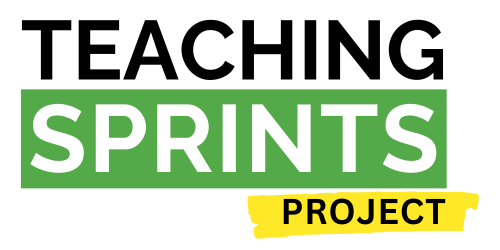A Starter for Giving Clear & Precise Explanations
Integrate information for students
Improving the clarity and precision of our explanations.
🧩
What problem does it solve?
When our students' working memory is overloaded and they are unable to remember explanations.
❓
Why should I use it?
During learning, students are often asked to take in multiple sources of information. Yet, we have limited brain space for thinking (working memory). So, clear explanations make best use of that limited space. Information that must be combined should be placed in space and time (split-attention effect).
Also, when information disappears, and students must therefore hold it in working memory, this makes learning harder.
🚩
When can I use it?
When designing the way we present information to students.
How could you do it?
Integrate words into diagrams
Don’t use ‘the former’ and ‘the latter’, re-name what you’re talking about each time.
Align key ideas in ways that make it clear what is referring to what
Ensure key information is visible to students at all times
☝️ Common Mistakes
Using acronyms. Requires students to remember the word combination on top of understanding the learning. It’s only useful if you’re sure that students will be able to automatically recall the information.
Verbally explaining what the instructions are for multiple stations. Students are then required to remember what to do at each station when a simple instructions sheet at each station could integrate the instructions in time and space.
Teachers integrate all images and text. Information should only be placed together in space and time if it can’t be understood in isolation and is essential rather than redundant.
Teachers read information aloud that is also being displayed because they believe it provides clarity, however, it makes it redundant.
How can I make it even better?
Have a consistent section in presentations where reminders and instructions are placed.
Understanding that making information transient can be beneficial if the purpose is that we want them to retrieve the information from their memory.
How could I measure impact?
Lovell, 2020 offers several methods of how to analyse some of your instructional resources. After engaging with the learning, he offers the suggestion that in your Teaching Sprints groups, you all offer some work to be analysed by the group.
Choose an area for focus - Dual Coding, Split-attention, Redundancy Theory and have Teaching Sprint teams reflect on each other’s lessons between 2 points in time
Example
-
Monica (Mathematics, Head of Department) had recently read Ollie Lovell’s book - Sweller’s Cognitive Load Theory in Action and wanted to apply some of the suggested strategies. The Maths Department watched Lovell’s Starter video - Integrate Information For Students and they decided that this was an area that they could improve.
-
They agreed that they would first start by analysing what they were currently doing and share a collection of slides that they were going to use for an upcoming unit of work. Monica offered to show her work first, to demonstrate vulnerability and build that sense of trust. They then analysed the resources and made suggestions based on their understanding of Cognitive Load Theory, and what could make these resources more effective.
Intentional observations and evidence collection
After the collaborative planning session, teachers had to come back to the check-in meeting with evidence of further changes to the upcoming week’s lessons.
-
Staff came to the conclusion that the adjustments they were making were decreasing the extraneous load on students’ working memory.
Discussion of relevant evidence
Teachers completed a self-evaluation
For More Information
Lovell, O. (2020) Sweller’s Cognitive Load Theory in Action. John Catt Edu Ltd
Blog: Inner Drive - Using Cognitive Load Theory In The Classroom
YouTube: Craig Barton - Avoid the Split-Attention Effect during worked examples - Tips for Teachers

